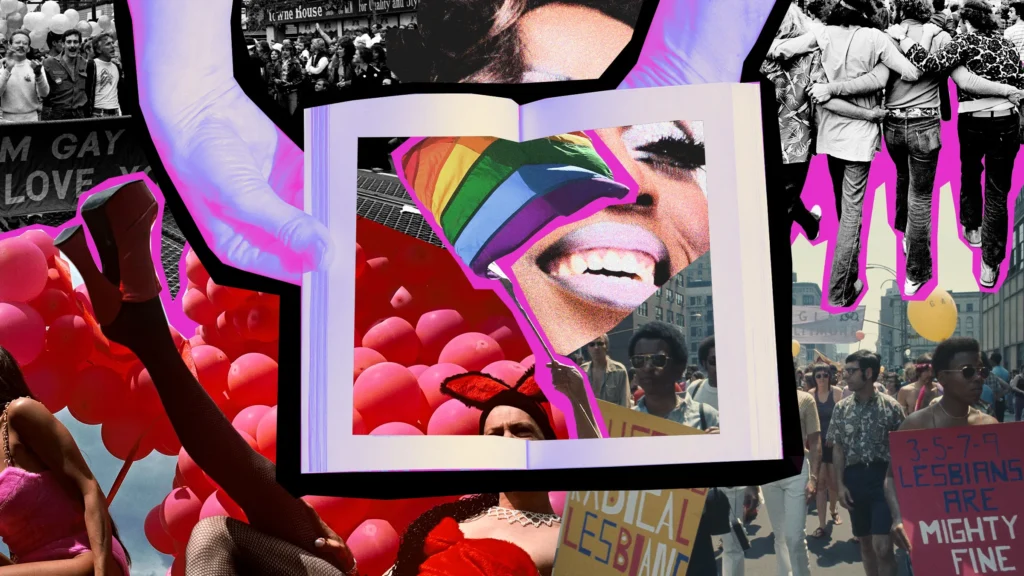Preserving Queer History Amid Political Change
Have you ever stopped to think about how the stories we tell today shape tomorrow? Lately, the political scene feels like one big eraser, trying to wipe away the progress made by the LGBTQ+ community bit by bit. But, hey, don’t freak out! There’s a bunch of savvy folks out there weaving history’s threads back together—digitally. They’re tackling Queer History Preservation head-on, proving that storytelling online is not just important; it’s absolutely paramount.
The Rise of Queer Resistance Through Literature
Think “resistance,” and you probably imagine marches and chants, right? Sure, that’s part of it. But let’s not overlook the quieter (yet just as fierce) battlefields—like literature. The queer community has wielded words as weapons for ages. Take the “Queer History 101” book club. It’s basically a library of stories fighting ignorance with every turn of the page, showcasing pure LGBTQ+ digital activism. Pretty neat, huh?
Here’s a shocker: One in three LGBTQ+ folks faced discrimination in 2020. That’s a staggering reminder of why literary activism can’t take a backseat. Books are immortal in a way, serving as our storytellers when we’re not around to tell the tales ourselves.
The Power and Evolution of Virtual Book Clubs
Ever been to a book club where pajamas are the dress code? Thanks to tech, you can now chat about those gripping stories with people around the globe in your comfiest outfit. Virtual Book Clubs are sprouting up everywhere. “Queer History 101” is crushing it, with everything from interactive sessions to theme nights—no theme’s too bold, either. These clubs are like modern-day campfires. You gather around, share tales, and walk away with new insights.
They’re more than just literature hangouts; they’re like digital greenhouses nurturing growth and empathy. It’s community-building, minus the s’mores but with all the warmth.
Challenges Faced by Queer Communities Under Political Pressures
Politics, huh? It’s as unpredictable as the weather. And during certain administrations, policies felt like storms ready to rain on the queer parade. For instance, narratives involving transgender and wider LGBTQ+ identities were tested repeatedly. Pre-Internet activism was all about face-to-face grit. Handwritten zines and flyers were superior weapons back then. Seriously.
Today’s threats have a double edge: The web can rally us or reduce us, almost like a secret agent playing both sides. Challenges abound for Queer Communities, but so does perseverance.
The Role of Technology and Media in Queer Storytelling
You gotta admit, tech is a double-edged sword. For Queer Storytelling, it’s a life source but also a risk. Digital archives let us preserve history as it happens, turning stories into everlasting digital narratives. But there’s a risk of oversaturation or accidental digital black holes—kinda like those old MySpace pages no one remembers anymore.
Mix digital and physical storytelling, like merging grandma’s secret recipes with a flashy blog post. It’s all about finding that sweet balance.
Community Building Beyond Digital Spaces
In a world obsessed with screens, we sometimes miss the human touch, right? Face-to-face interactions breathe life into our online activism. It’s kinda like the icing on the cake—a sweet finish. Remember sit-ins and events that required more than just a tweet? Solidarity doesn’t need a Wi-Fi password, just a united cause.
Communities flourish with care and nurturing, just like gardens. From historical protests to today’s pride celebrations, it’s all about those human connections.
Conclusion: Ensuring a Resilient Future for Queer History
Queer history—ever the phoenix. Even when it seems burned down, it rises again. We have to stay passionate about passing down these stories and remain vigilant in our advocacy. They’re not just tales; they’re legacies in action, ready to inspire generations long after we’re gone.
Stay updated on the main challenges and tailored solutions by visiting Key Challenges and Solutions for LGBTQ+ Communities.


